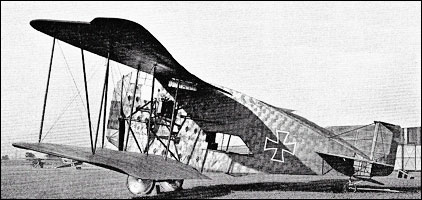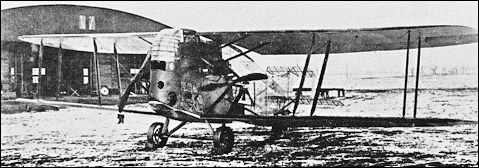|
| The Linke-Hoffmann R.I was half covered with transparent Cellon in an attempt at partial invisibility. It achieved the opposite effect, partly because the Cellon discoloured rapidly, but mainly because it reflected the sun so strongly.
Both R.I prototypes used four 260hp Mercedes D.IVa engines, carried inside the fuselage, powering two chain-driven propellers.
Further experimentation with unorthodox propulsion configurations would lead to the Li. R.II - a massive aircraft with all four engines driving a single airscrew in the nose.
Rosebud's WWI and Early Aviation Image Archive
| wanqian, 21.06.2011 06:59 Best source of information about this and other giant German aircraft of WWI is "The German Giants". reply | | Klaatu, e-mail, 03.05.2011 22:07 Prior to World War I the Linke-Hoffmann company was in the business of building rolling stock for the German railways. Somehow, it comes as no surprise at all to learn that an airplane like this should have been built by people who manufacture boxcars! reply | | B. Carter, e-mail, 24.08.2010 12:11 Correction: The propellors were driven by driveshafts (not chains). Also, the R.I was built in two versions. The first is shown below the text, displaying the cellon fuselage. The second version, in which the cellon covering was reduced to panels under the tailplane, is shown above the text. Best source of information about this and other giant German aircraft of WWI is "The German Giants". reply |
|
Do you have any comments?
|
| 
COMPANY
PROFILE
All the World's Rotorcraft
|







